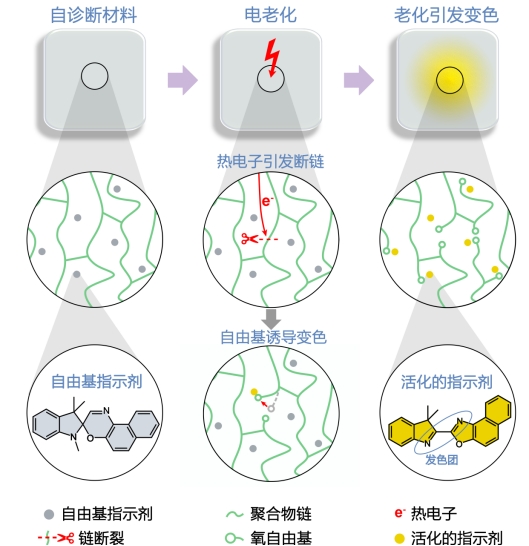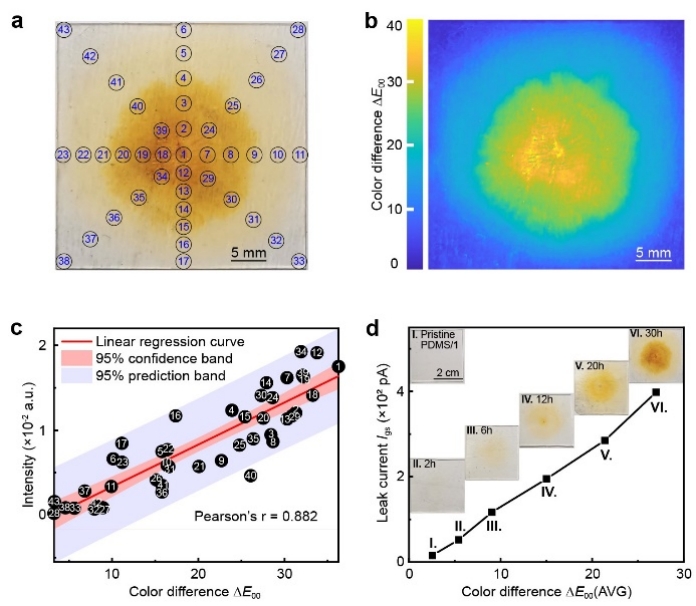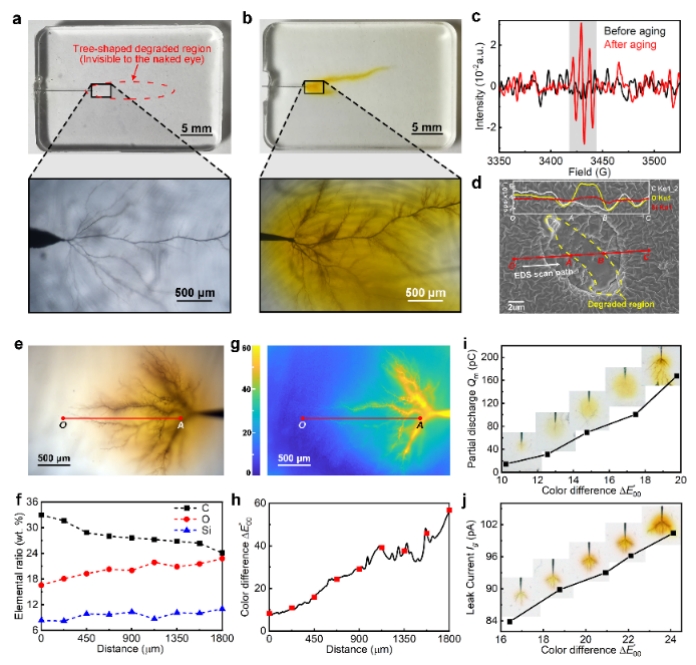The Department of Electrical Engineering and Applied Electronics (EEA) at Tsinghua University has recently made significant progress in the field of electrical and electronic basic materials research, as reported in the journal “Nature · Materials” on November 17, 2023. Professors He Jinliang and Associate Professor Li Qi, along with their research team, addressed a critical issue in electrical equipment and electronic systems regarding the early detection of electrical aging in insulation materials. This aging, if not effectively warned against, can lead to catastrophic electrical breakdown. After seven years of dedicated exploration, the team introduced intelligent response insulation materials with self-diagnostic capabilities for electrical aging. These materials spontaneously produce visually identifiable color warning signals when undergoing electrical aging, eliminating the need for external testing or analytical methods. This method is expected to reduce the risk of electrical breakdown in insulation media and electronic devices within electrical equipment and electronic systems, ensuring the reliable operation of electrical, energy, and electronic systems. The research findings, titled “Autonomous Indication of Electrical Degradation in Polymers,” were published in the international academic journal “Nature · Materials” with an impact factor of 41.2.

Design Principles of Self-Diagnostic Insulation Materials for Electrical Aging
Dielectric polymers are widely used as insulation materials in various electrical and electronic systems. Critical systems, such as power transmission and transformation systems, new energy systems, aerospace systems, and rail transportation systems, are prone to electrical aging of insulation materials under harsh operating conditions. If not detected and maintained in a timely manner, this aging can lead to the breakdown of key equipment, causing significant economic losses. However, electrical aging typically starts in small regions and may not cause significant changes in the overall electrical performance of materials in the early stages, making it challenging to detect. Traditional electrical aging monitoring methods based on observation and external characteristic measurements require substantial manpower, computational power, time, and equipment costs. Despite these efforts, they still face bottlenecks such as poor universality, operational difficulties, susceptibility to environmental interference, and difficulties in timely and accurately identifying potential accidents.
To overcome the technical bottlenecks of traditional methods, the research team drew inspiration from the sensory processes of biological organisms and ingeniously utilized the high chemical reactivity of oxygen radicals generated during the polymer electrical aging process. This induced a color reaction in molecular indicators, allowing the polymer dielectric to spontaneously produce visually recognizable color warning signals. This method only requires the addition of 0.1% mass fraction of molecular indicators, causing significant color changes during electrical aging without affecting the insulation performance of the material.
To demonstrate the effective application of this self-diagnostic method for electrical aging in dielectric polymers, the research team identified and determined the chemical structure of the indicator-stimulated color change in the complex electrical aging products of self-diagnosing polymers. They rigorously demonstrated the self-diagnostic mechanism of oxygen radicals induced indicator color change during electrical aging. The team quantified the color differences before and after the color change using color difference evaluation formulas, characterized the structural degradation degree of materials using infrared spectroscopy, and evaluated the performance loss of materials with leakage current and partial discharge, proving the quantitative relationship between color change and the degree of electrical aging.

Mechanism of Stimulated Color Change in Molecular Indicators (Spirooxazine)

Associating Electrical Degradation on the Surface of Intelligent Response Insulation Materials with Color Change
This self-diagnostic method is applicable to various forms of electrical aging, including external insulation surface aging caused by corona discharge or surface flashover and internal insulation electrical tree aging. It is also suitable for various polymer matrices, including amorphous polymers (such as silicone rubber) and semi-crystalline polymers (such as polypropylene), thermosetting polymers (such as epoxy resin), and thermoplastic polymers (such as polycarbonate), as well as polymers with different glass transition temperatures. Therefore, this method, as a universal approach, can be widely used for insulation monitoring in various electrical equipment and electronic systems.

Visualization of Self-Diagnosis of Internal Electrical Tree Aging in Intelligent Response Insulation Materials
Huang Xiaoyan, a doctoral student in EEA, and Zhang Shuai, a doctoral graduate of EEA, are the co-first authors of the paper. Associate Professor Li Qi and Professor He Jinliang of EEA are the corresponding authors of the paper, and other collaborators include Professor Hu Jun from the EEA at Tsinghua University. The research received support from the State Key Research and Development Program and the National Natural Science Foundation of China. This work, along with the team’s recent achievements, forms an intelligent insulation material system with self-adaptability, self-diagnosis, and self-repair.
Paper Link: https://www.nature.com/articles/s41563-023-01725-8

















 News & Events
News & Events